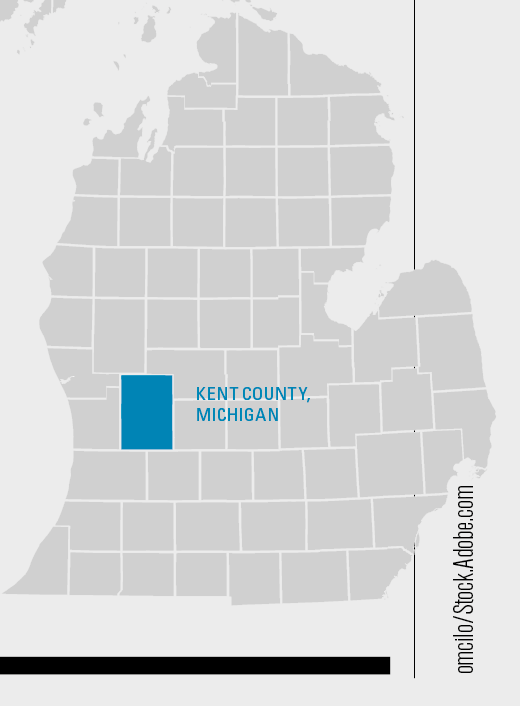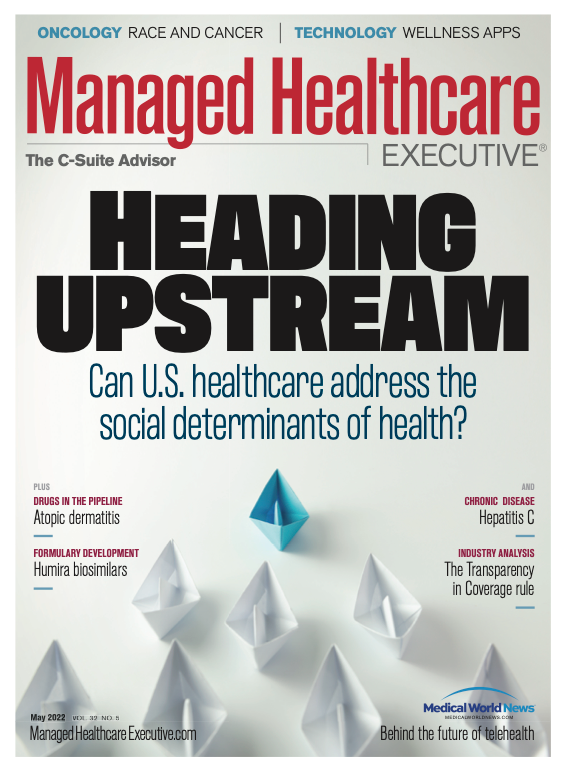A Tale of Two Counties Tackling the Social Determinants of Health
Social determinants of health (SDOH) have been on the minds of local, county and state governments for years. These two jurisdictions have been conspicuously active in pioneering innovative programs addressing SDOH.
Editor's Note: This arrticle was published in our May issue along with "Traveling Upstream to the Social Determinants of Health" and "Positive Outcomes for SDOH Interventions: A Q&A With Kate Sommerfeld."
Kent County, Michigan
Not every U.S. county was bold enough in 2012 to make a 13½-minute video titled “Framing Social Determinants of Health” challenging itself to do a better job of addressing the wellsprings of health disparities. But this home of Grand Rapids did. “We must measure our success by impact,” declared one community leader on the video, citing the need for improvements in rates of diabetes and high blood pressure among Black and Latino residents. Added the leader, “Shame on us if we’re having this conversation a year from now.”

A decade later, the nation has learned humility about the complex task of addressing SDOH — and so has Kent. Although survey numbers aren’t available for the number of patients with hypertension, the rate of self-reported diabetes did decline among Black adults in the county between 2014 and 2020, from 18.9% to 15.9%. But disparities lived on (the comparable figures for White adults: 8.5% to 7.6%) despite many initiatives, including improvements to local parks and a partnership with the YMCA’s “Veggie Van,” a mobile farmers’ market that provides produce to stores in food-desert areas.
Kent County is still waging the SDOH fight by, for example, putting CDC grant money to work addressing needs identified by the community. A neighborhood group, Seeds of Promise, advised the county to focus on housing and a program was shaped accordingly.
Asked what advice she’d offer other counties with high-need populations, Teresa Branson, chief diversity, equity and inclusion officer for the county’s Health Department (and narrator of that video in 2012), says it’s vital to build trust with sometimes skeptical community residents.
“Don’t plan anything without the community,” she says.
“We’ve been guilty of doing that for years in public health,” Branson adds. “We think we have the answers, and a lot of times we don’t.”
Maricopa County, Arizona
You can say “ACCESS” when you speak of the 40-year-old agency that administers the Arizona’s Medicaid program, but you don’t spell it that way. It’s AHCCCS, or Arizona Health Care Cost Containment System. Medicaid expansion dollars under the ACA have made possible “exciting partnerships” to address social determinants of health, says Blythe FitzHarris, Ph.D., LCSW. She’s the chief clinical officer at Mercy Care, a nonprofit health plan that serves people eligible for AHCCCS benefits.

Although transportation to doctor visits is a Medicaid-covered benefit, the funding also permits the plan to contract with providers to expand services not directly covered, such as meal deliveries to pregnant women or transportation to a support-group meeting. “We work with our cities and counties to ‘braid’ funding,” FitzHarris explains. “We say to them, ‘If you can partner with us and deliver a subsidy, then we can deliver the service supports,’ recognizing that most of these folks who are receiving county assistance also likely qualify for Medicaid.”
When experts say it’s not yet clear what mix of SDOH interventions is ideal, they get no argument from FitzHarris. But she’s happy to share some numbers from Maricopa County, where Phoenix is. They’re not new — they come from a January 2018 report — but they show the kind of things Mercy Care has been doing. For a certain high-need population, healthcare costs were approximately $20,000 per member, per quarter, before a housing subsidy initiative was implemented. The program cut the total cost of care by 24% (per member, per quarter), the cost of behavioral health professional services by 23% and behavioral health facility costs by 46%.
Mercy Care’s SDOH work can get pretty granular, as one summertime experience showed. “In our (emergency department) reports, we had someone who was continually going in,” FitzHarris says. It turned out that “the individual’s air conditioner didn’t work. He had some physical ailments. But we’re in Phoenix — it’s 120 (degrees)!” Mercy Care worked with local utilities to fix the electrical problem in his home. “And, lo and behold, he stopped going to the emergency (department) so much,” FitzHarris says.

Conversations With Perry and Friends
April 14th 2025Perry Cohen, Pharm.D., a longtime member of the Managed Healthcare Executive editorial advisory board, is host of the Conversations with Perry and Friends podcast. His guest this episode is John Baackes, the former CEO of L.A. Care Health Plan.
Listen
Why Better Data and Awareness Matters for Medicaid Work Requirements
April 17th 2025With policymakers considering work requirements for Medicaid eligibility, Jennifer Haley, principal research associate in the Health Policy Division at the Urban Institute, said it’s more important than ever to understand how those changes could unintentionally cause harm, particularly when data systems fall short and public awareness is limited.
Read More
Breaking Down Health Plans, HSAs, AI With Paul Fronstin of EBRI
November 19th 2024Featured in this latest episode of Tuning In to the C-Suite podcast is Paul Fronstin, director of health benefits research at EBRI, who shed light on the evolving landscape of health benefits with editors of Managed Healthcare Executive.
Listen
Medicaid Expansion Linked To Timelier Lung Cancer Surgery and Access to High-Volume Hospitals
April 17th 2025New research shows that Medicaid expansion was linked to a 2.1% increase in timely lung cancer surgeries and a 2.8% rise in procedures at high-volume hospitals, highlighting how policy changes can impact cancer care access.
Read More
Conversations With Perry and Friends
April 14th 2025Perry Cohen, Pharm.D., a longtime member of the Managed Healthcare Executive editorial advisory board, is host of the Conversations with Perry and Friends podcast. His guest this episode is John Baackes, the former CEO of L.A. Care Health Plan.
Listen
Why Better Data and Awareness Matters for Medicaid Work Requirements
April 17th 2025With policymakers considering work requirements for Medicaid eligibility, Jennifer Haley, principal research associate in the Health Policy Division at the Urban Institute, said it’s more important than ever to understand how those changes could unintentionally cause harm, particularly when data systems fall short and public awareness is limited.
Read More
Breaking Down Health Plans, HSAs, AI With Paul Fronstin of EBRI
November 19th 2024Featured in this latest episode of Tuning In to the C-Suite podcast is Paul Fronstin, director of health benefits research at EBRI, who shed light on the evolving landscape of health benefits with editors of Managed Healthcare Executive.
Listen
Medicaid Expansion Linked To Timelier Lung Cancer Surgery and Access to High-Volume Hospitals
April 17th 2025New research shows that Medicaid expansion was linked to a 2.1% increase in timely lung cancer surgeries and a 2.8% rise in procedures at high-volume hospitals, highlighting how policy changes can impact cancer care access.
Read More
2 Commerce Drive
Cranbury, NJ 08512
All rights reserved.